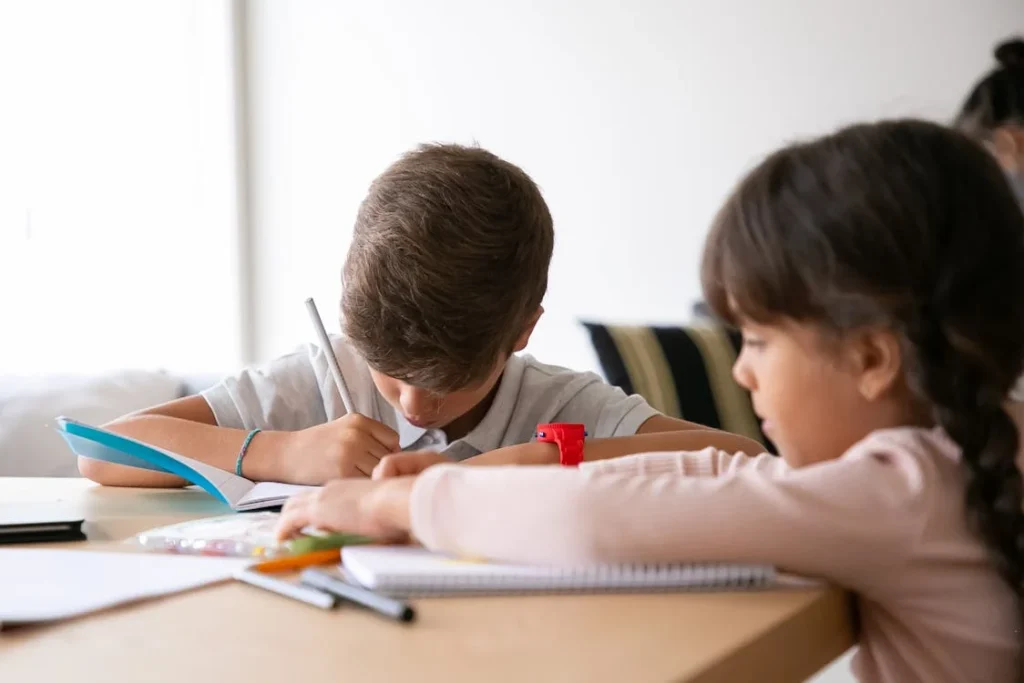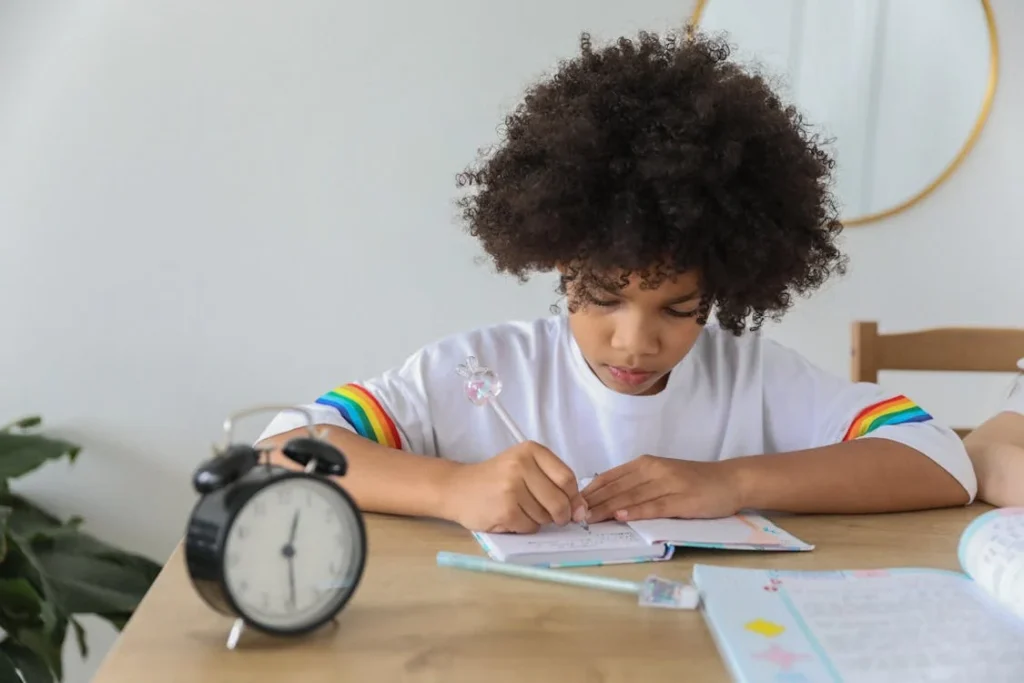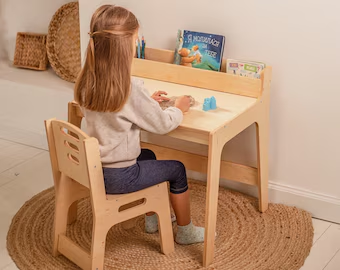Homework Station Ideas! As the school year kicks into gear, creating a dedicated homework space at home can make a world of difference. Kids of all ages benefit from having a quiet, organized environment where they can focus and get their work done efficiently. Whether you have a large home or a small apartment, a smartly designed homework station will encourage good habits and reduce daily stress. With just a few intentional changes, you can turn any space into a productivity powerhouse.
In this article, we’re sharing 10 homework station ideas that are both functional and fun. These ideas will help your child concentrate better, stay organized, and feel motivated to tackle their assignments each day. Let’s dive into the best ways to build a study space that works.
1. Choose a Distraction-Free Zone

The first and most important element of a successful homework station is location. Choose a spot away from TVs, video games, loud conversations, or any other common distractions. Even a few feet can make a big difference when it comes to staying focused on the task at hand. If possible, avoid high-traffic areas like the kitchen or living room during homework hours.
If space is tight, consider creating a portable station that can be brought to a quieter spot when needed. A fold-up desk in a bedroom or hallway nook can work wonders. You can also use bookshelves or curtains as visual dividers to help block out background activity. This separation helps the brain associate the space with focus and study time.
The key is consistency—your child should know that when they sit in this space, it’s time to learn. Setting up this routine helps build focus over time. With fewer distractions, kids can complete their work faster and with better results.
2. Prioritize Good Lighting

Lighting plays a crucial role in maintaining energy and focus, especially during evening study sessions. Natural daylight is ideal, so try to place your homework station near a window. Bright, well-lit spaces help prevent eye strain and keep kids alert, making it easier to stay on task.
When natural light isn’t an option, supplement with a quality desk lamp. Look for adjustable lamps with warm white LED bulbs that reduce glare and mimic natural light. Some even come with dimmers or color temperature controls to match the time of day.
Avoid placing screens directly opposite windows, as glare can be distracting and cause fatigue. Layer your lighting if needed—pair ceiling lights with a lamp for balanced brightness. Good lighting not only improves focus but also makes the space more inviting and pleasant to use.
3. Invest in Comfortable, Supportive Seating

A great chair is just as important as a great desk. Kids need seating that supports their back and encourages good posture during study time. A chair that’s too soft or too stiff can quickly lead to discomfort and restlessness.
Look for adjustable chairs that can grow with your child. If your child’s feet don’t touch the ground, add a footrest or use a sturdy box for support. This small detail helps reduce slouching and improves blood flow for longer periods of focus.
Add cushions for comfort or seat pads with memory foam if needed. Encourage your child to sit with both feet on the ground, knees at a 90-degree angle, and their back supported. A comfortable seating setup makes it easier for kids to stay put and power through homework.
4. Use a Desk That Fits the Child’s Needs

The desk is the foundation of your homework station, so choose one that suits your child’s size and work habits. A small child-sized desk works best for younger kids, while teens may need something larger with space for laptops or textbooks. Make sure the surface is spacious enough to spread out papers without feeling cluttered.
For tight spaces, wall-mounted desks or fold-out tables can be great space-savers. You can also repurpose small tables, vanity desks, or even dining room tables in shared living areas. Floating desks work well in bedrooms and can be folded away when not in use.
Consider storage too—built-in drawers or shelves help keep supplies nearby without cluttering the desktop. A well-fitting desk helps your child stay organized and comfortable, making study time more efficient and less frustrating.
5. Keep Supplies Within Arm’s Reach

One of the biggest distractions during homework time is having to search for missing supplies. Keep everything your child needs within easy reach by organizing items in bins, baskets, or desktop caddies. Essentials like pencils, rulers, markers, and paper should be readily accessible.
A rolling cart is a flexible solution, especially for shared spaces. It can be moved out of the way when not in use and stocked with homework essentials. Label containers so your child can find what they need quickly and put things back in the right place.
Drawer dividers and desktop organizers also work well for keeping small items tidy. When everything has a designated spot, your child is less likely to waste time—and more likely to stay focused on their work.
6. Incorporate a Bulletin Board or Whiteboard

A visual tool like a whiteboard, chalkboard, or corkboard can do wonders for organization and motivation. Use it to track homework assignments, list goals, or display inspiring quotes. Seeing tasks laid out visually helps kids plan their work and manage their time.
Magnetic boards are another great option and allow for easy rearranging of notes and reminders. You can also use sticky notes in different colors to organize by subject or priority. Some boards even come with calendars or grids to help with daily planning.
Encourage your child to use the board actively—crossing off tasks creates a satisfying sense of progress. These tools not only keep kids organized but also help develop essential executive function skills over time.
7. Reduce Clutter for Better Focus

Too much clutter can create visual noise and mental distraction. Keep the homework station as clean and simple as possible. Start by removing anything that isn’t used daily, and store it elsewhere.
Use small bins, drawer organizers, or trays to group similar items together. Encourage a quick 5-minute cleanup at the end of each study session so the area stays tidy and ready for the next use. This also teaches responsibility and good habits.
Try a minimalist approach: only keep what’s necessary on the desktop, and let everything else live in storage nearby. A clutter-free space feels more peaceful and helps your child maintain better concentration.
8. Personalize the Space for Motivation

While simplicity is key, a few personal touches can make the homework station feel more inviting. Let your child choose the color of their chair cushion, pick out fun desk accessories, or decorate with their favorite artwork. This ownership encourages them to actually want to use the space.
Motivational quotes, vision boards, or framed photos can make the space feel positive and inspiring. Add a small plant, a lava lamp, or other cozy elements to make it more welcoming. A space that reflects your child’s personality can boost their enthusiasm for study time.
Personalization doesn’t have to be expensive—DIY decor, printed photos, or inexpensive accessories from a dollar store can go a long way. Creating a space that feels like theirs will help them take pride in keeping it tidy and productive.
9. Add Noise Control Solutions

Noise is a common productivity killer, especially in shared households. If you can’t guarantee silence, add some simple sound-control solutions. Noise-canceling headphones are a fantastic tool for kids who are easily distracted by household sounds.
Soft furnishings like rugs, curtains, or fabric wall hangings help absorb noise and reduce echo. White noise machines or calming instrumental playlists can also mask background sounds without being distracting themselves.
In some cases, placing the desk in a closet or alcove can provide a sound buffer. Find what works best for your home and your child’s personality—some kids work better in total silence, while others thrive with a little background hum.
10. Set Up a Charging Station for Devices

With many schools using tablets and laptops, having a tech-friendly station is more important than ever. Keep cords organized and accessible by setting up a small charging station at or near the desk. Use cable clips, sleeves, or zip ties to reduce cord chaos.
Label cords and outlets if multiple devices are used. You can even mount a small power strip under the desk or on a nearby wall for easy access. Having everything plugged in and ready to go helps eliminate tech-related delays.
Create a drawer or basket where devices can be stored safely when not in use. This also helps limit screen distractions by encouraging kids to “put away” their devices when homework is done. A tidy tech setup ensures a smoother, more focused homework experience.
Conclusion
Creating a smart homework station doesn’t require a complete home makeover—just a few thoughtful changes can dramatically improve your child’s ability to focus and succeed. From reducing distractions to adding personal flair, each idea above is designed to help boost productivity and make study time more enjoyable.
Start with one or two changes and build from there. Whether your child is in elementary school or preparing for college, having a dedicated, comfortable, and organized space can set them up for success. Have a tip of your own? Share it in the comments or tag us with photos of your homework station setup!

